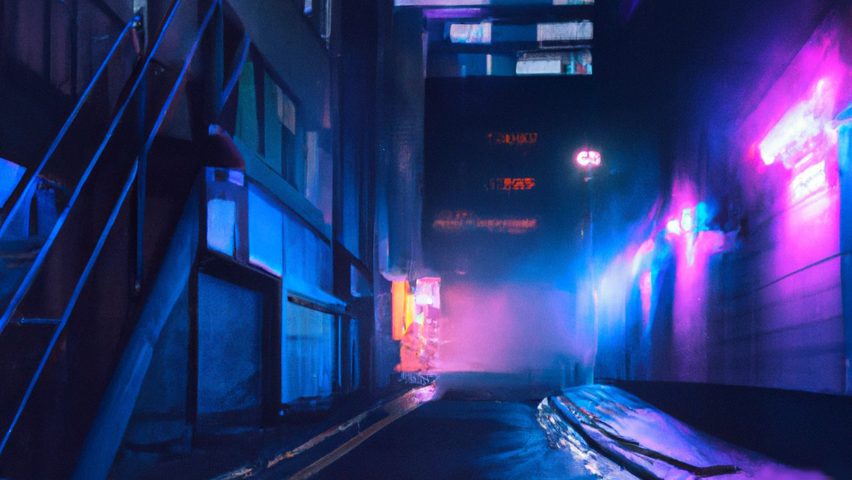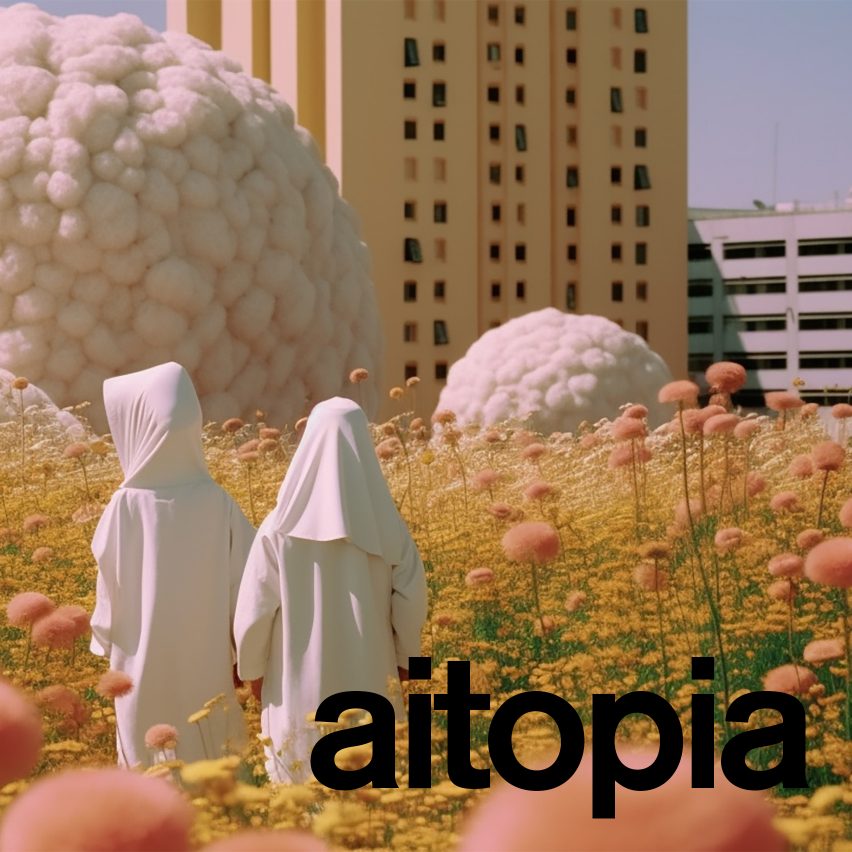
"If everyone believes the future is dystopian, could that cause us to make it dystopian?"
Our collective obsession with cyberpunk narratives risks turning dystopian visions of AI into a self-fulfilling prophecy, writes Freyja Sewell.
I love science fiction. From a childhood spent watching Star Trek, Farscape and Babylon 5 to an adulthood of dressing as Darth Vader for Star Wars opening weekends and a design practice that focuses on the meeting between sci-fi and the natural world, I see the future as open, unknown and ours to co-create.
It is this deep love that prompts me to bring focus to an unpleasant reality that has been sneaking up on us. For many people, sci-fi has become cyberpunk – the dark, dystopian vision seen in Blade Runner and Ready Player One. Let me state categorically: sci-fi is not cyberpunk. Cyberpunk is one of many fascinating sub-genres of sci-fi.
The cyberpunk rhetoric is coming to a head as we create and legislate for the foundational AIs – the AIs that will make other AIs. Now is a critical moment to consider the priorities we program in, rather than fearfully assume the worst because it's the only idea we're aware of.
The cyberpunk rhetoric is coming to a head as we create and legislate for the foundational AIs
Let me ask you, dear reader, what does the future look like to you? When you close your eyes and imagine it, what images come to mind? It will be impossible for me to guess exactly what you are thinking, but I'll bet I can get close.
Perhaps in our future you see unjust power structures of robots and AIs, built and controlled by a few powerful corporations or individuals? Perhaps you're imagining endless dark sprawling cities of skyscrapers and flying cars? And perhaps environmental destruction seems inevitable, and nature will become a luxury for only a select few to access whilst most people struggle to survive on a dying planet?
Well, these are all classic cyberpunk tropes, explored in books like Neuromancer and Altered Carbon and movies like Terminator and Robocop.
Cyberpunk was created during the 1960s and '70s in the incredibly imaginative and provocative writings of authors like Philip K Dick, Michael Moorcock, Roger Zelazny, John Brunner and J G Ballard. As you may be able to guess, it is not a diverse group of people who created cyberpunk, it's a group of white, mainly western men.
While reflecting on this information, let us ask ourselves whether it is a coincidence that many of the fiercest lovers of cyberpunk and the most common "winners" of cyberpunk narrative power-structures are from the same demographic as the majority of controllers of AIs and AI evangelists. I'm looking at you, Silicon Valley Tech Bro.
Cyberpunk is a completely dystopian future, where our planet either hovers on the edge, or has fallen completely into environmental destruction. The narratives are consistently of dominance and control, between the rich and poor, corporations and market and humans and humanoid AI robots or slaves they create. Cyberpunk is a world defined by systematic and oppressive inequality.
It's like we're all stuck in our granddads' idea of the future
It is a lonely, anthropocentric vision. The more-than-human world of creatures and plants are subjugated and controlled and only enjoyed by a privileged one per cent, whilst most humans live in a highly mechanised society cut off from other species. "High tech, low life" is the most common definition, meaning they've created all these incredible technologies, but they don't improve the lives of most people, in fact, they make life worse.
Is this a world you want to live in? A vision created by a single type of person half a century ago? It's like we're all stuck in our granddads' idea of the future.
If this isn't a world you want, take care, because sci-fi is more than just entertainment. Sci-fi inspires the real world we all inhabit. There is a long history of designers taking cues from sci-fi visions: flip phones, self-driving cars and the metaverse to name a few.
It's perfectly understandable. What we see influences our tastes and ideas. So when we consistently present each other with this one cyberpunk vision stuck in a cut-and-paste record skipping loop, I just can't stop asking myself a question: if everyone believes the future is dystopian, could that cause us to make it dystopian?
Is this conviction in so many of our brains creating a reality that we don't want, and didn't have any say in defining? I fear, deeply fear, that it has become a self-fulfilling prophecy.
There is, of course, one important reason why cyberpunk is so dominant: it was brilliant. Clearly it was a fascinating and provocative creation, one that I have greatly enjoyed. It well deserves its critical place in sci-fi history. There's really good stuff in there, the metaverse, transhumanism, androids, but it is history, an old idea.
We need to understand we can explore the concepts that excite us elsewhere. When we obsessively explore the same cyberpunk vision over and over we impoverish sci-fi. We reduce it to a one-way conversation, where we allow a small group of people to define all our futures. We also ignore, and so erase, the work of other talented creatives who have contributed to the field – the living soft spaceships of Octavia Butler and gender-bending alien worlds of Ursula Le Guin just to get started.
The more conversations I have, the more alarmist clickbait I see, the more I realise that some people actually believe the cyberpunk story of AIs and their one-per-cent handlers enforcing a new evil empire and ruling forever and ever. But history, psychology and logic tell us one thing that empires and overly dominant power systems always, always do: they fall.
Yes, AIs will temporarily further consolidate power into the hands of those who already have too much. No boys, your robot toys will make you into immortal gods, this isn't Elysium or Bladerunner, this is reality.
Science fiction is an open creative prompt which could result in infinite visions
I am excited at the potential AI holds to efficiently and ethically help us manage and distribute the finite resources of our planet within the systems of nature and eight billion humans. To release an unprecedented wave of human creativity and problem solving just when we need it, by clearing our schedules from busy work.
There are plenty of talented people working on just these kinds of uses. Unfortunately the majority of the huge processing power required is currently being squandered to generate adverts for soda pop, scrape our data without explicit permission and add fictional numbers to a few people's bank accounts.
Imagine if all the voices, previously ignored by our listening to only one group, felt empowered to create their own visions. Imagine if, rather than only thinking about a narrow type of mechanistic technology, we started exploring things like wet computing, DNA bio printing, mycelium materials.
What would a world that was grown rather than extracted and constructed look like? Imagine if the recent rise of ancient and indigenous culture was included, technologies of psychedelic ceremony and healing intertwining with our AIs and understanding of interconnectivity.
Science fiction is an open creative prompt which could result in infinite visions. I'm so excited for a time when we remember this, and our sci-fi stories become as diverse, complex and full of variety as the world we share. F**k cyberpunk, bring on the future!
Freyja Sewell is a London-based interdisciplinary designer and artist whose work focuses on a biophilic vision of the future. She recently gave a talk about how female designers can reshape the metaverse.
The image was created using DALL-E 2.

AItopia
This article is part of Dezeen's AItopia series, which explores the impact of artificial intelligence (AI) on design, architecture and humanity, both now and in the future.
Dezeen in Depth
If you enjoy reading Dezeen's interviews, opinions and features, subscribe to Dezeen In Depth. Sent on the last Friday of each month, this newsletter provides a single place to read about the design and architecture stories behind the headlines.